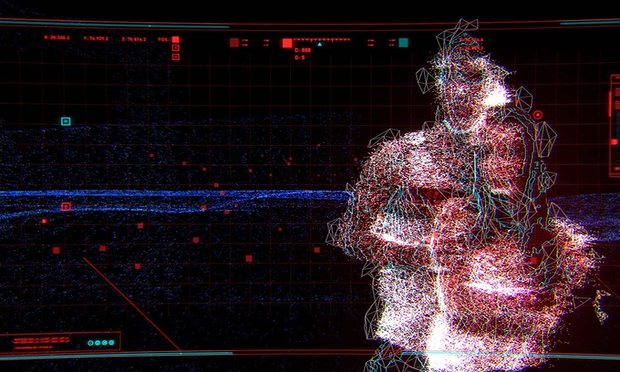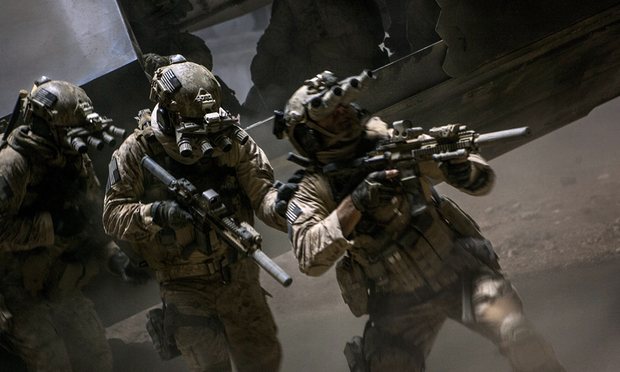David Sheldon-Hicks, who has worked on Guardians of the Galaxy and Ex Machina, examines advances in motion capture and 3D printing
3D printing
3D printing is set to revolutionise film-making from a production design perspective. Concept artists often design with computer-generated imagery (CGI) and computer-aided design (CAD) software, which lends itself perfectly to printing in 3D. Because the technology can also achieve such sophisticated levels of detail, print size and finish, props departments on big productions are embracing the flexibility and efficiency the process affords.
Propshop, for example, is a production company at Pinewood Studios that has been instrumental in producing set pieces for many films that our studio has worked on, for example the night vision goggles in Zero Dark Thirty and a full-scale tank exterior for an action set-piece in Fast & Furious 6. Even the canopy of Peter Quill’s spaceship in Guardians of the Galaxy was 3D-printed.
Recently released films such as Ex Machina and Avengers: Age of Ultron also used Propshops’ facilities, where entire spaceships and sets can be printed and assembled. It’s amazing to see in practice and while some issues are still to be refined, it’s a technology that has become part of the production designer’s toolkit.
Virtual reality
Everyone seems to be talking about virtual reality (VR), a technology that offers new and exciting ways to consume information and entertainment. As a non-linear medium, VR brings a very different viewing experience to the table. Appropriate applications for film are still being explored, but a number of players, such as Oculus Story Studio, are working hard to define the best and most compelling VR cinema formats.

As a designer, I can see that VR offers exciting possibilities: as a dynamic new storytelling medium; as a rich narrative device within conventional film; and as a practical, time-saving preproduction tool. With the sheer amount of concept art and design that is now created in digital 3D files, VR offers production designers a new way of showing a director a full set environment complete with props, before it’s built.
VR also offers new opportunities to create experiences that enrich the main cinematic event, helping to immerse the audience in a movie before it begins, perhaps through a behind-the-scenes tour, a character backstory, or even a virtual wander through the film environment.
Depth Sensors
Traditionally, 3D motion capture is an expensive investment, but we recently worked with a new format that seems to be revolutionising this space.
In a short film called Miles, we worked with VFX photographer Andrew Gant, who shot with a markerless motion-capture device called the Depth Kit. Developed as a CGI-video hybrid, the software repurposes the depth-sensing camera from the Microsoft Kinect to capture and visualise the world as wireframe forms.By syncing the Depth Kit to the camera with which he was shooting, Gant captured a 3D CGI sculpture for every frame of film, essentially giving us a file of 3D animation that perfectly lined up to the film’s characters and action. The thinking and process behind the Depth Kit is really indicative of how film-making is developing and evolving. While not appropriate for every film, it was perfect for our project, delivering powerful flexibility that allowed us to explore new ways to tell a story.
Film (it never went away)
Today, the flexibility and immediacy of digital filming makes a lot of sense, but while this format is still evolving, celluloid is a medium at the pinnacle of its technology.
With Interstellar shot on Imax 65mm and projected in 70mm, and the new round of Star Wars films committed to anamorphic 35mm, the continuing impact of this well-developed technology should not be underestimated. While expensive and demanding, its unsurpassed image quality, rich colours, deep tones and textural details continues to attract passionate film-makers such as Christopher Nolan, Steven Spielberg, Quentin Tarantino and JJ Abrams, who are all fighting to save the format from obsolescence.
In a culture that is continually looking for smaller, faster and more convenient ways of doing things, we can often abandon a technology before it reaches maturity. Film is still technically superior in some ways and dedicated craftsmen are still refining it.
As a motion graphic designer working in film, I can appreciate that the rapid evolution and versatility of digital has revolutionised film-making, but as an artist passionate about craft, I’m reassured film still has its place and holds its own.
Cloud and collaborative workflows
As with any business activity, teamwork is at the heart of all good films. Digital communication has made film-making a smaller, more efficient space that allows the director to draw on the best resources around the world. It’s not uncommon for us to work with a production team in Los Angeles, a film shoot in London and VFX teams in Romania, Canada or China. Managed well, this can bring specialisms to the fore, which benefits everyone. London’s reputation for artisanal traditions and emphasis on craftsmanship make our creative studios highly sought after in film.
As a creative studio, our reliance on sharing and managing files between multiple users working on one project means that we’re dependent on software, which can be frustrating. Software companies would do well to start thinking about designing software around collaborative teams, in addition to the individual. Software developed by people who really understand the dynamic of creative briefs and collaborative workflows could be a major game changer


Leave a Reply